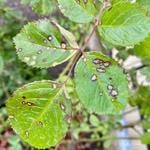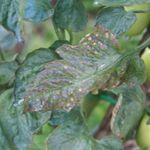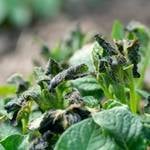
How to Grow Winged Bean Seeds
Grow Guide #2488
Family: Fabaceae
Binomial name: Psophocarpus tetragonolobus
Life Cycle: Perennial (usually grown as an annual in cool climates)
This 'How to Grow' guide details everything a home gardener needs to know to plant, grow and care for Winged beans (Psophocarpus tetragonolobus).
When to Sow Winged bean Seeds
Winged bean is a warm season crop that requires warm soil to germinate and a long growing season. Use the table below to identify the best time of year to sow winged bean seeds in your climate.
| JAN | FEB | MAR | APR | MAY | JUN | JUL | AUG | SEP | OCT | NOV | DEC | |
|---|---|---|---|---|---|---|---|---|---|---|---|---|
| Cool | ||||||||||||
| Temperate | ||||||||||||
| Sub-Tropical | ||||||||||||
| Tropical | ||||||||||||
| Arid |
Preparation
Winged bean plants are perennial, meaning they live for several years. Choose a permanent position where plants can grow undisturbed by regular digging.
Winged bean plants are best grown in full sun. Choose a location that will receive at least 6 hours of full sun each day.
Winged bean plants need a well drained soil enriched with plenty of organic matter. Prepare soil by weeding it thoroughly, digging it over to loosen it and adding aged animal manure or compost. Keep the area free of weeds until planting. Learn more about preparing soil for planting here.
How to Sow Winged bean Seeds
Optional: Scarifying seeds prior to planting will improve the speed and success of germination. Scarification involves intentionally damaging the hard outer coating of the seeds to allow water to reach the seed's embryo. Use a sharp knife to make a shallow nick in each seed's shell, or gently wear away a section of the husk using fine sandpaper or a nail file. Read more about scarification here.
Winged bean seeds grow best when they are raised in trays or other containers and transplanted to the garden once established.
- Fill trays, punnets or jiffy pots with a good quality seed-raising mix, or use soil starter pellets.
- Sow seeds 20mm deep.
- Keep soil moist but never wet or dry.
- Seeds should germinate in around 7-21 days at a soil temperature of 25-30°C.
- Transplant seedlings to the garden once they have their first true leaves and are large enough to handle (usually 5-10cm tall).
- Plant out, spacing plants 25cm apart, with rows 100cm apart.
Winged bean is a tender crop that’s sensitive to frost. Do not transplant seedlings or sow seeds outside until all danger of frost has passed.
How to Grow Winged bean
Winged bean plants may need watering during the growing season. Water when the soil is dry about 5cm below the surface (test this by scratching away a little soil with your finger). Water deeply in the early morning or late afternoon. Avoid watering the leaves of plants to avoid fungal diseases. Learn more about watering here.
If soil was well prepared no extra fertiliser should be necessary. In poor soil or to give your plants an extra boost, application of a balanced fertiliser or one formulated for fruit and vegetables can be beneficial:
- Apply slow release fertiliser at the recommended rate when transplanting or when seedlings are 5-10cm tall.
- Apply liquid fertiliser at the recommended rate and frequency while plants are fruiting or flowering.
Winged bean requires a trellis or other strong support to grow on. Tie plants gently to the support using twine or plant ties. Make sure you have the support in place when you sow seed or transplant seedlings to avoid disturbing the plant’s roots later.
Winged bean plants may die back in cold weather. Cut plants back just above ground level in late autumn, or prune off dead foliage when new leaves emerge in spring.
How to Harvest Winged beans
Winged beans should be ready to harvest in approximately 120-240 days.
All parts of the winged bean plant can be eaten, including the leaves, flowers, pods, young seeds and tuber. The immature seed pods are the most commonly eaten part of the plant.
Pods are ready to harvest when they are between 5cm and 10cm long. Harvest pods by cutting with snips/secateurs. Harvest regularly to encourage more pods. Pods are best eaten soon after harvest. Store pods short term in a perforated plastic bag in the fridge.
Young leaves can be harvested and used in salads or cooked as a substitute for spinach. Harvest the top three sets of leaflets on a shoot along with the stem by cutting them with clean, sharp secateurs or snips. Flowers can be harvested when fully open and used to colour and flavour rice dishes.
Harvest tubers when plants die back in autumn. Use a garden fork to gently lift the tubers from the bed, shaking off any excess soil. Tubers will grow larger in cool climates.
Common Problems when Growing Winged beans
Like all plants, winged bean is susceptible to some pests, diseases and other problems. Below is a list of the most common problems gardeners encounter when growing winged bean plants:
.jpg) Tough pods, peas or beans is usually caused by harvesting the pods when they are too large. Harvest pods when they are firm and large enough to eat but still young and tender; harvesting pods while they are small will also encourage the production of more pods resulting in a larger harvest.
Tough pods, peas or beans is usually caused by harvesting the pods when they are too large. Harvest pods when they are firm and large enough to eat but still young and tender; harvesting pods while they are small will also encourage the production of more pods resulting in a larger harvest. Bacterial leaf spot is a disease that causes irregularly shaped brown spots on all above-ground parts of a plant. The spots at first appear to be wet but become dry and scab-like over time. Leaves and flowers can fall prematurely. Water plants at soil level (not on the leaves), dispose of fallen leaves and fruit and practice crop rotation.
Bacterial leaf spot is a disease that causes irregularly shaped brown spots on all above-ground parts of a plant. The spots at first appear to be wet but become dry and scab-like over time. Leaves and flowers can fall prematurely. Water plants at soil level (not on the leaves), dispose of fallen leaves and fruit and practice crop rotation. Downy mildew is a fungal disease that causes yellow to grey-brown patches on leaves, especially the undersides. Water plants at soil level (not on the leaves), remove and destroy affected leaves and do not overcrowd plants to ensure adequate air flow. If problems persist, spray with a homemade milk spray or fungicide.
Downy mildew is a fungal disease that causes yellow to grey-brown patches on leaves, especially the undersides. Water plants at soil level (not on the leaves), remove and destroy affected leaves and do not overcrowd plants to ensure adequate air flow. If problems persist, spray with a homemade milk spray or fungicide. Frost damage can cause leaves to wilt and go black. Do not plant seedlings in the garden until all danger of frost has passed in spring, and harvest plants before winter. Prune all frost-damaged leaves to avoid them rotting on the plant.
Frost damage can cause leaves to wilt and go black. Do not plant seedlings in the garden until all danger of frost has passed in spring, and harvest plants before winter. Prune all frost-damaged leaves to avoid them rotting on the plant..jpg) Powdery mildew is caused by fungal spores reproducing on the leaves of plants. First showing as white spots on leaves, affected areas can spread quickly to cover the entire leaf surface. While rarely fatal, powdery mildew can reduce yields. Water plants at soil level (not on leaves) to prevent spreading spores, allow good air flow between plants, remove affected leaves and if necessary spray with an appropriate fungicide or homemade spray. Read more here about powdery mildew here.
Powdery mildew is caused by fungal spores reproducing on the leaves of plants. First showing as white spots on leaves, affected areas can spread quickly to cover the entire leaf surface. While rarely fatal, powdery mildew can reduce yields. Water plants at soil level (not on leaves) to prevent spreading spores, allow good air flow between plants, remove affected leaves and if necessary spray with an appropriate fungicide or homemade spray. Read more here about powdery mildew here.


.png)



